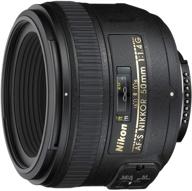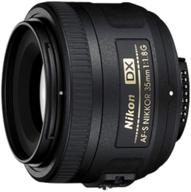
Review on New Nikon 18-105mm Vibration Reduction 📷 Zoom Lens with Auto Focus for Nikon DSLRs by Aneta Szczerba (Szcz ᠌

All is well, liked the product, didn't buy it for nothing.
Getting acclimated to the lens and being familiar with what can and cannot be accomplished with it takes some time. I was dissatisfied after taking the first few landscape shots since, when compared pixel for pixel, the quality turned out to be worse to that of my previous Samsung NX11: the frames were less sharp both at the wide end and at the telephoto end. Yet, it was sufficient to decrease the photographs to the size of the NX11 frame in order to guarantee that the 18-105 was at least as good as the other lens. For a period of time, it was not possible to produce sharp shots at 105mm; instead, the photos came out a little blurry or doubled. After that, I made the realization that the stabilizer was to fault for this problem, which occurred whenever the shutter speed was set to anything higher than 1/250. Now that I'm using a 105mm lens, I always get sharp shots by setting the shutter speed to no more than 1/320 and the aperture to 7.1. In theory, if the hands are not trembling, then you should be able to get a sharp shot with a shutter speed of 1/160. However, the stabilizer should be turned off in order to avoid the slight doubling that occurs with tree branches and other narrow objects. At 18 millimeters, I have not yet discovered a way to acquire shots with the same sharpness as at 105 millimeters; even at the closest approximation, the photographs still appear to have a soapy quality. By lowering the resolution of the photographs in the raw editor to less than 14 megapixels and then using a weak sharpening filter, I am able to address this problem for myself. For the same reason, I set the camera to take pictures in jpeg format at once, but I used the M (14MP) setting rather than the L setting (24MP). But the capabilities of the stabilizer were something that really stood out to me. Once you get the hang of it, you can shoot static images at 18 millimeters with a shutter speed of up to a quarter of a second without the image becoming blurry (relative to what would have happened at a short shutter speed without it). However, when shooting at 105mm during the day, the stabilizer is essentially of no use due to the "micro-lubrication" that was discussed earlier. Even with a focal length of 105 millimeters, it is feasible to take a photograph that is only reasonably sharp using a shutter speed of one fourth of a second when the subject is up close. The instability of focusing on the horizon when using an 18mm lens is the final aspect that I do not particularly like about this lens. As a result of this instability, I have to double-check every landscape frame. Moreover, there is no way to manually set the focus to infinity in a hurry within the lens. In summary, after having some conversation with the lens, I reconsidered how I felt about it, and I've decided that I prefer to enjoy it rather than dislike it.
- 1. A crisp image when shot at a distance. 2. Excellent stability even when shooting at wide angles. 3. A focusing speed that is both quick and quiet 4. Accurate autofocus when shooting at telephoto. 5. Reasonably inexpensive pricing.
- 1. Less sharp when viewed from a wide angle. 2. The stabilizer will work on multi-pixel matrices, but it will leave a very slight blur or doubling at shutter speeds that are faster than 1/250 when it is in the teleposition. 3. If you look very closely, you'll see that the corners of the frame are notably less sharp than the ones in the middle. 4. When attempting to focus on the horizon with a wide-angle lens, the autofocus feature will occasionally give preference to objects that are closer, and there is no way to quickly set the focus to infinity manually.
New products
Comments (0)
Top products in 👓 Lenses

📷 Nikon AF-S NIKKOR 50mm f/1.4G Lens with Auto Focus: Perfect for Nikon DSLR Cameras

76 Review

Nikon 50mm f/1.8D Lens: Perfect for Nikon DSLR Cameras!

97 Review

Canon EF 40mm f/2.8 STM Lens - Fixed Black (6310B002) for US Cameras

76 Review

Nikon 35mm f/1.8G Auto Focus Lens for Nikon DSLR Cameras - Black (Model 2183)

125 Review






